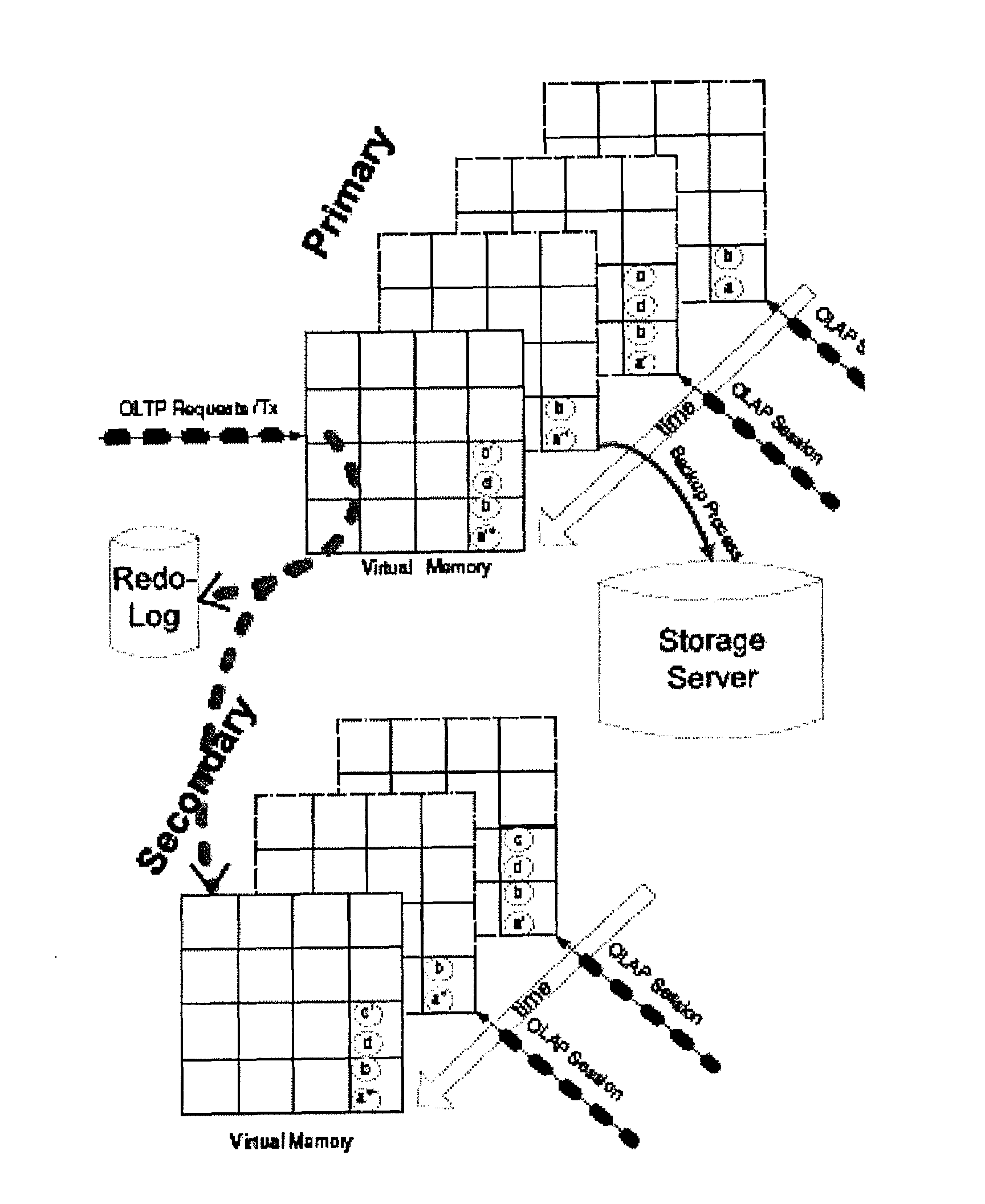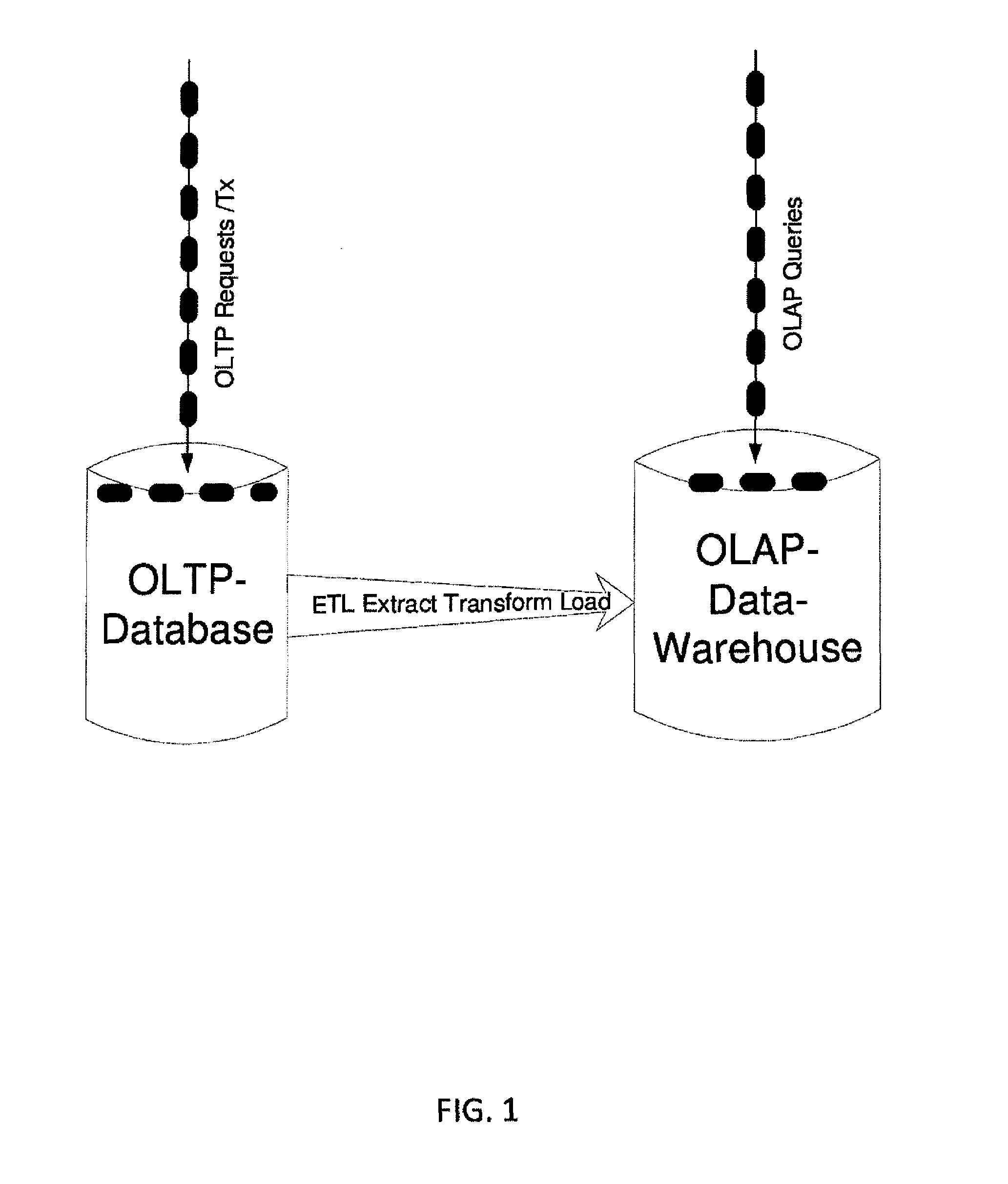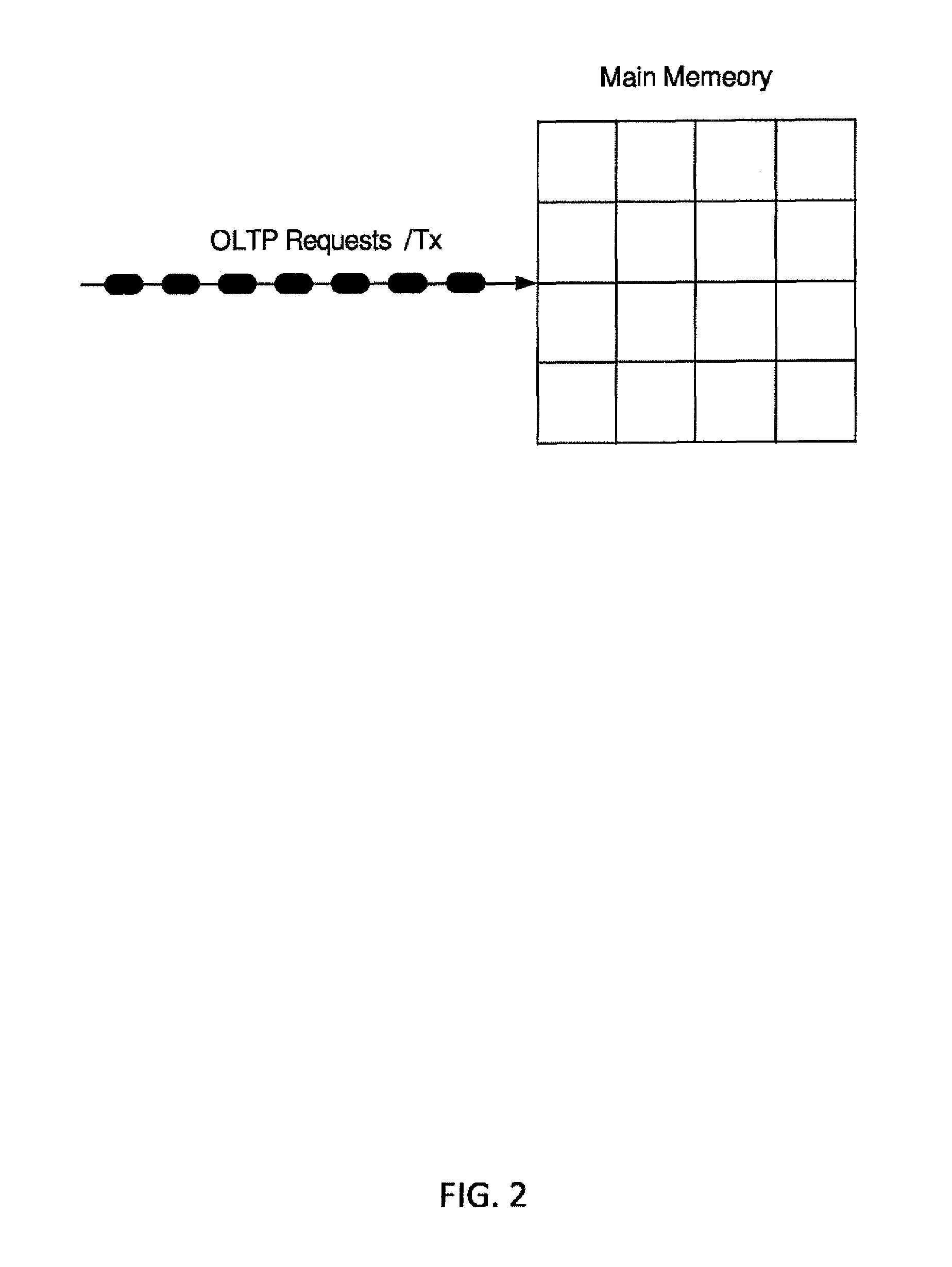Hybrid OLTP and OLAP High Performance Database System
- Summary
- Abstract
- Description
- Claims
- Application Information
AI Technical Summary
Benefits of technology
Problems solved by technology
Method used
Image
Examples
Embodiment Construction
[0028]The main-memory architecture for transaction processing in accordance with an embodiment of the present invention is illustrated in FIG. 2. In this embodiment, a single-threading approach has been adopted wherein all OLTP transactions are executed sequentially. This architecture obviates the need for costly locking and latching of data objects or index structures as the only active update transaction “owns” the entire database. This serial execution approach can be advantageously implemented through a main memory database where there is no need to mask I / O operations on behalf of one transaction by interleavingly utilizing the CPUs for other transactions. In a main-memory architecture a typical business transaction (e.g., an order entry or a payment processing) has a duration of only a few up to ten microseconds. However, if complex OLAP-style queries were allowed to be injected into the workload queue they would clog the system, as all subsequent OLTP transactions would have ...
PUM
 Login to View More
Login to View More Abstract
Description
Claims
Application Information
 Login to View More
Login to View More - R&D
- Intellectual Property
- Life Sciences
- Materials
- Tech Scout
- Unparalleled Data Quality
- Higher Quality Content
- 60% Fewer Hallucinations
Browse by: Latest US Patents, China's latest patents, Technical Efficacy Thesaurus, Application Domain, Technology Topic, Popular Technical Reports.
© 2025 PatSnap. All rights reserved.Legal|Privacy policy|Modern Slavery Act Transparency Statement|Sitemap|About US| Contact US: help@patsnap.com



